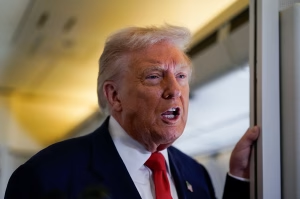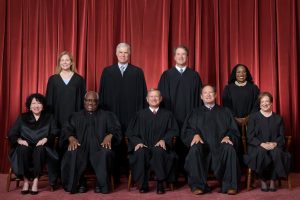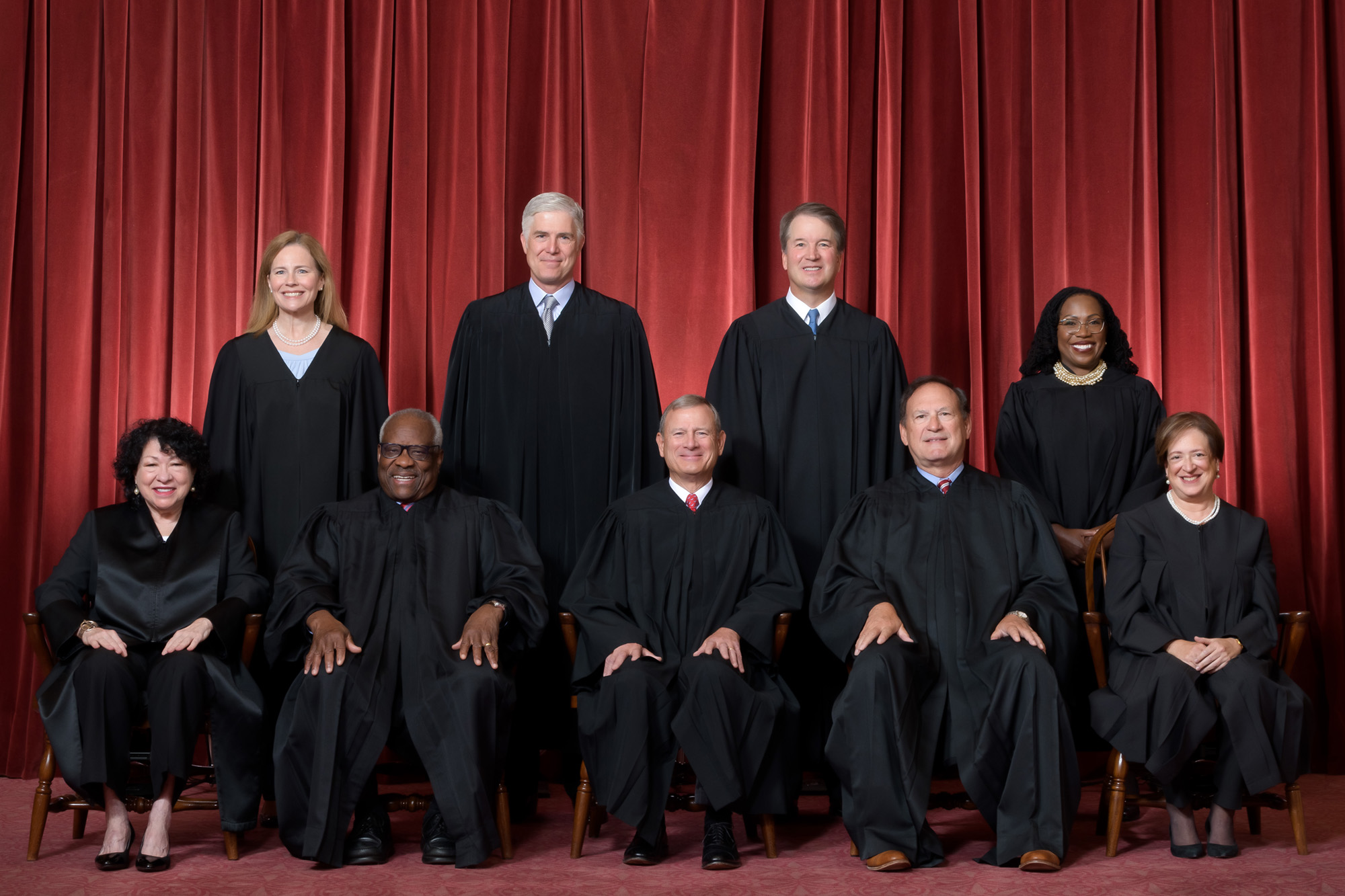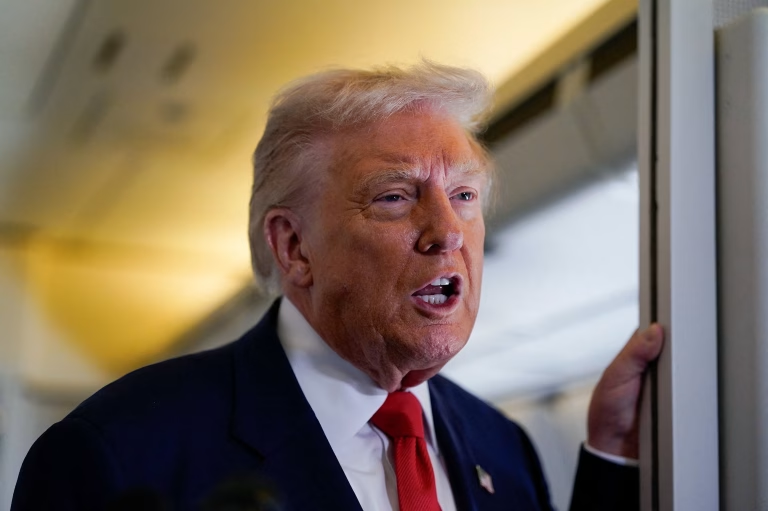A Surprise Supreme Court Decision Reverberates Through Washington
In a move that caught many political observers off guard, Supreme Court Justice Elena Kagan — one of the court’s most consistently liberal voices — declined to block the deportation of a Mexican family who claimed they would face cartel violence if forced to return home. Her decision, issued quietly and without commentary, effectively allowed the Trump administration’s removal order to proceed.
The petitioners, a family of four from Guerrero, Mexico, had spent nearly four years attempting to remain in the United States, citing direct threats from the Los Rojos cartel. Their attorneys argued they faced almost certain violence if returned. Yet Justice Kagan, acting alone, chose not to intervene. She neither referred the request to the full court nor offered any written explanation — a choice that amplified the impact of the ruling.
The move marked a rare alignment between Kagan and the Trump administration on one of the most politically charged issues of the moment: immigration enforcement. And it immediately fueled debate about the evolving legal battleground surrounding deportation cases under Trump’s second administration.
The Family’s Account of Cartel Threats
According to their legal filings, the family fled Guerrero in 2021 after cartel members demanded they abandon their home within 24 hours or face execution. Attorneys said the cartels targeted the family because of their refusal to comply with extortion demands and because relatives had previously been victimized.
Their case traveled through the immigration system rapidly:
-
An immigration judge denied their claim for protection.
-
The Board of Immigration Appeals upheld the ruling in late 2023.
-
The Ninth Circuit Court of Appeals affirmed the decision in February 2025.
With their removal date only hours away, the family requested emergency relief from the Supreme Court — relief Justice Kagan ultimately denied.
Their attorney, LeRoy George, argued in the court filing that the family had provided “credible and detailed testimony” and that immediate removal would place them in “imminent danger.” The government disagreed, asserting that the legal process had run its course.
Why Kagan’s Decision Matters Politically
Given Kagan’s longstanding reputation as a progressive justice, her decision prompted swift reactions from both sides of the political aisle.
For conservatives, it was a striking moment of validation — the Trump administration’s immigration approach had, for once, been allowed to proceed without resistance from one of the court’s liberal anchors.
For Democrats, it added to the complexities of a system where even sympathetic asylum seekers can run into institutional dead ends.
But the legal shockwaves did not end there.
A Separate Immigration Battle Creates Headlines
Hours after Kagan’s ruling, the national conversation shifted to another high-profile immigration fight — this one involving Chief Judge James Boasberg of the U.S. District Court for D.C.
Boasberg had previously ordered the Trump administration to return MS-13 gang member Kilmar Abrego Garcia to the United States after his deportation, arguing that removal had violated procedural requirements. But the Supreme Court abruptly stepped in, vacating Boasberg’s order and directing that the matter should have been heard in Texas, not Washington.
The ruling dealt Boasberg a highly public judicial setback — and it sparked a fierce exchange on cable news.
Legal Analyst: Judge Was “Embarrassed” and “Desperate”
Appearing on Fox & Friends, former federal prosecutor Kerri Urbahn argued that Boasberg’s subsequent actions — including an attempt to hold Trump administration officials in contempt even after the Supreme Court vacated his order — reflected frustration and a degree of “judicial posturing.”
“When I was reading his decision, it struck me as desperate,” Urbahn said. “I think he’s embarrassed. He made this a very public matter for weeks.”
She suggested that Boasberg may have believed Chief Justice John Roberts would ultimately back him, especially after Roberts issued a widely covered statement urging political figures not to attack the judiciary. But the Supreme Court declined to support Boasberg’s intervention in the case.
“The Supreme Court didn’t back him — they took the case out of his hands entirely,” she said.
The Contempt Question and the DOJ Pushback
The tension deepened when Boasberg demanded that the government comply with his original order anyway, arguing that officials should have obeyed it before it was vacated. The Department of Justice countered sharply, claiming Boasberg had no authority to issue the order to begin with — meaning they were under no obligation to comply at any stage.
Urbahn explained the strange legal limbo:
-
The Supreme Court directed that the proper process for Abrego Garcia — including the ability to challenge his removal — must now occur through habeas proceedings in Texas.
-
Boasberg, despite being overruled, continued to insist the administration had acted improperly.
“It’s a bizarre situation,” she said. “He’s effectively saying: ‘You should have obeyed my order even though the Supreme Court says it never should have existed.’ That’s not how this works.”
The Larger Context: A New Phase of Immigration Battles
The combined effect of Kagan’s refusal to block a deportation and the Supreme Court’s intervention in the MS-13 case paints a clear picture: immigration disputes have moved back to the center of American political conflict.
Under President Trump’s second term, deportation orders are being challenged more aggressively by progressive attorneys and judges — and the Supreme Court has quickly become a pivotal arena for determining the limits of that resistance.
Kagan’s ruling in particular underscored a reality many activists try to ignore: even the Court’s liberal justices are not guaranteed allies in contested immigration cases.
What Comes Next
Legal experts expect similar emergency appeals to increase as the administration prioritizes rapid removals and stricter border controls. Both supporters and opponents of Trump’s immigration policies agree: the months ahead will be marked by more clashes between federal courts, immigration agencies, and advocacy groups.
For now, two rulings — one issued quietly by Justice Kagan, another delivered forcefully by the full Supreme Court — have shifted momentum toward the administration. And both have intensified political conversations about the judiciary’s proper role in immigration enforcement.

Emily Johnson is a critically acclaimed essayist and novelist known for her thought-provoking works centered on feminism, women’s rights, and modern relationships. Born and raised in Portland, Oregon, Emily grew up with a deep love of books, often spending her afternoons at her local library. She went on to study literature and gender studies at UCLA, where she became deeply involved in activism and began publishing essays in campus journals. Her debut essay collection, Voices Unbound, struck a chord with readers nationwide for its fearless exploration of gender dynamics, identity, and the challenges faced by women in contemporary society. Emily later transitioned into fiction, writing novels that balance compelling storytelling with social commentary. Her protagonists are often strong, multidimensional women navigating love, ambition, and the struggles of everyday life, making her a favorite among readers who crave authentic, relatable narratives. Critics praise her ability to merge personal intimacy with universal themes. Off the page, Emily is an advocate for women in publishing, leading workshops that encourage young female writers to embrace their voices. She lives in Seattle with her partner and two rescue cats, where she continues to write, teach, and inspire a new generation of storytellers.








